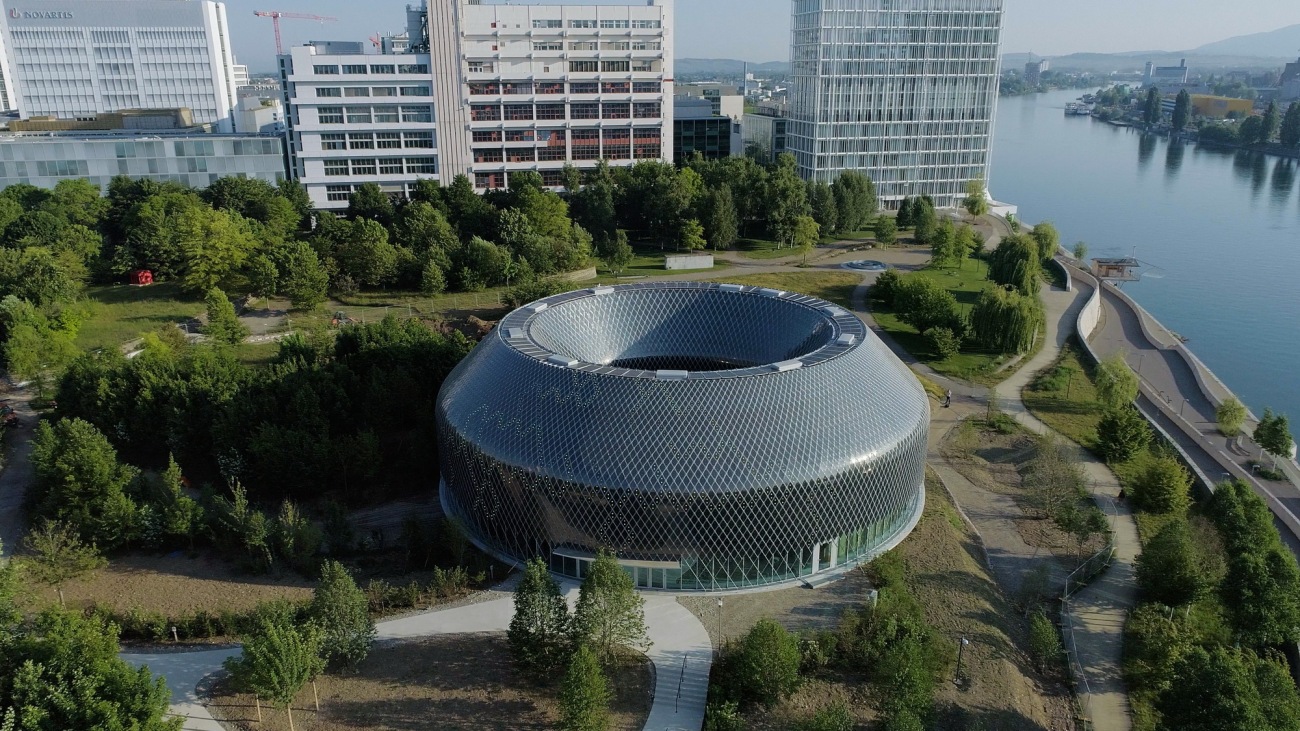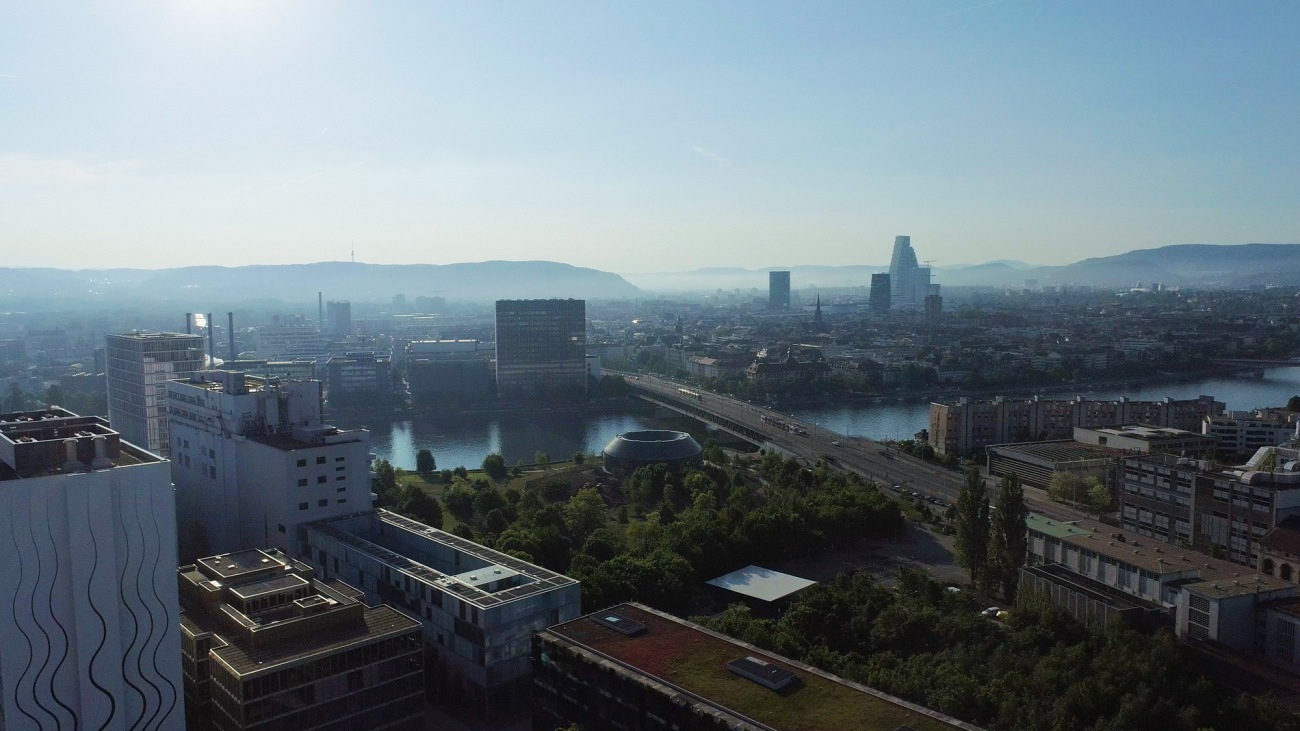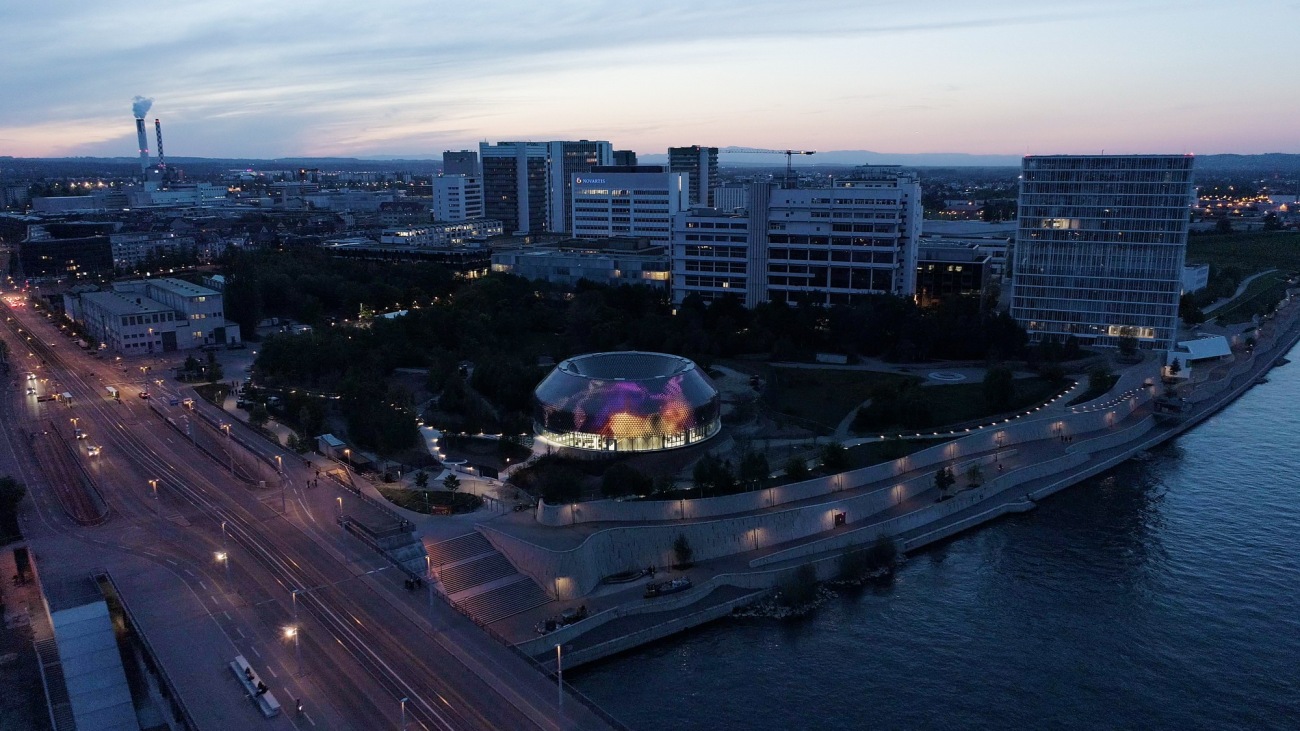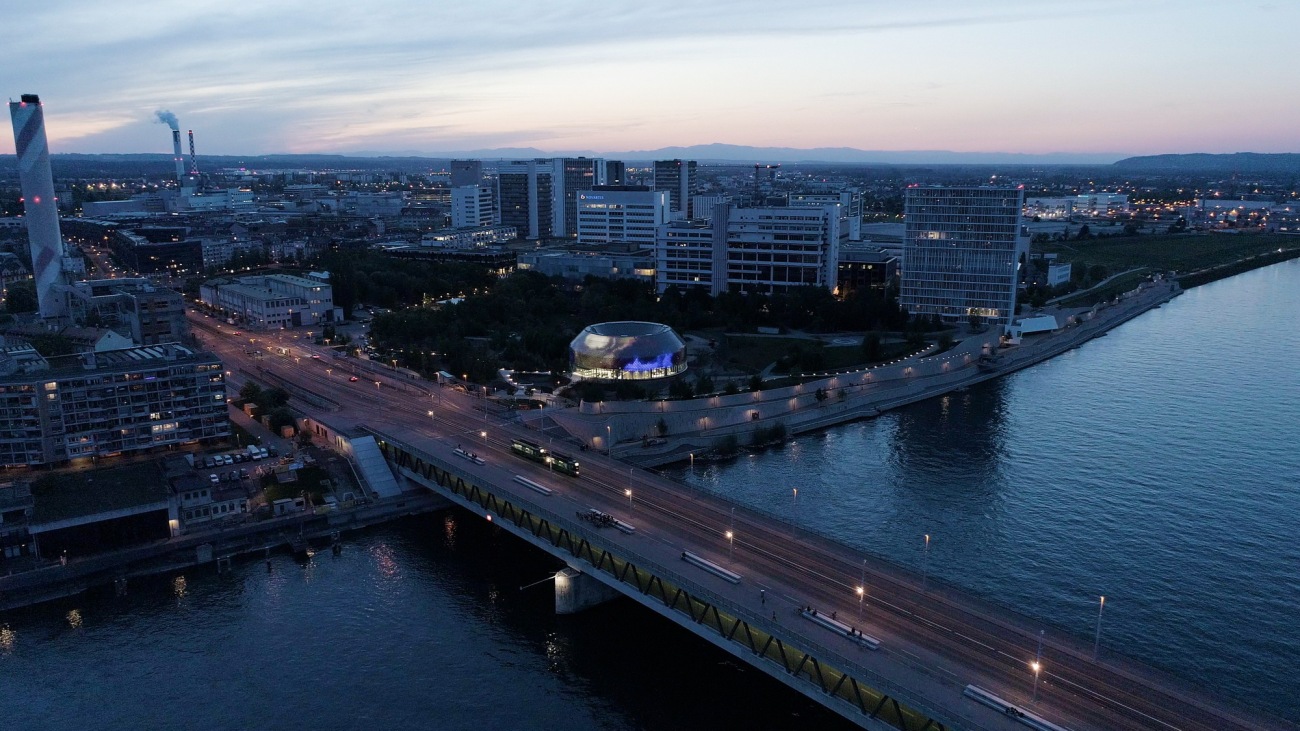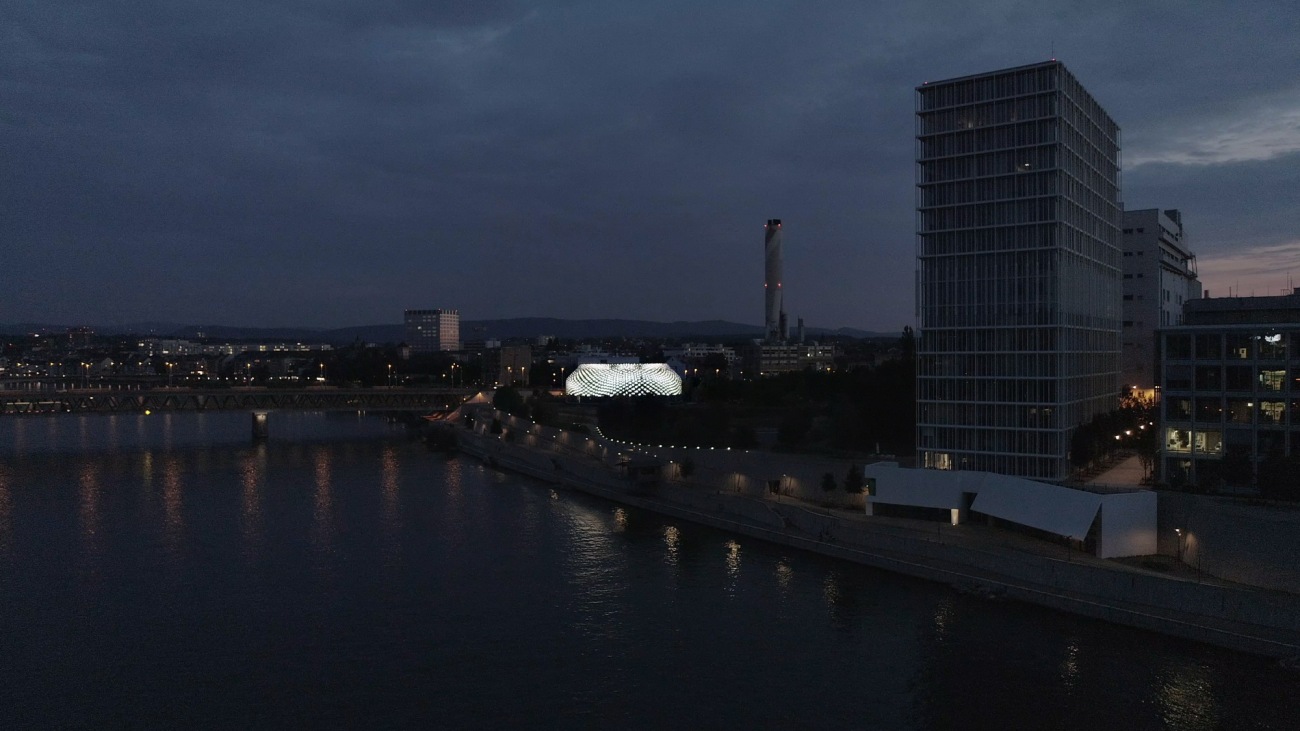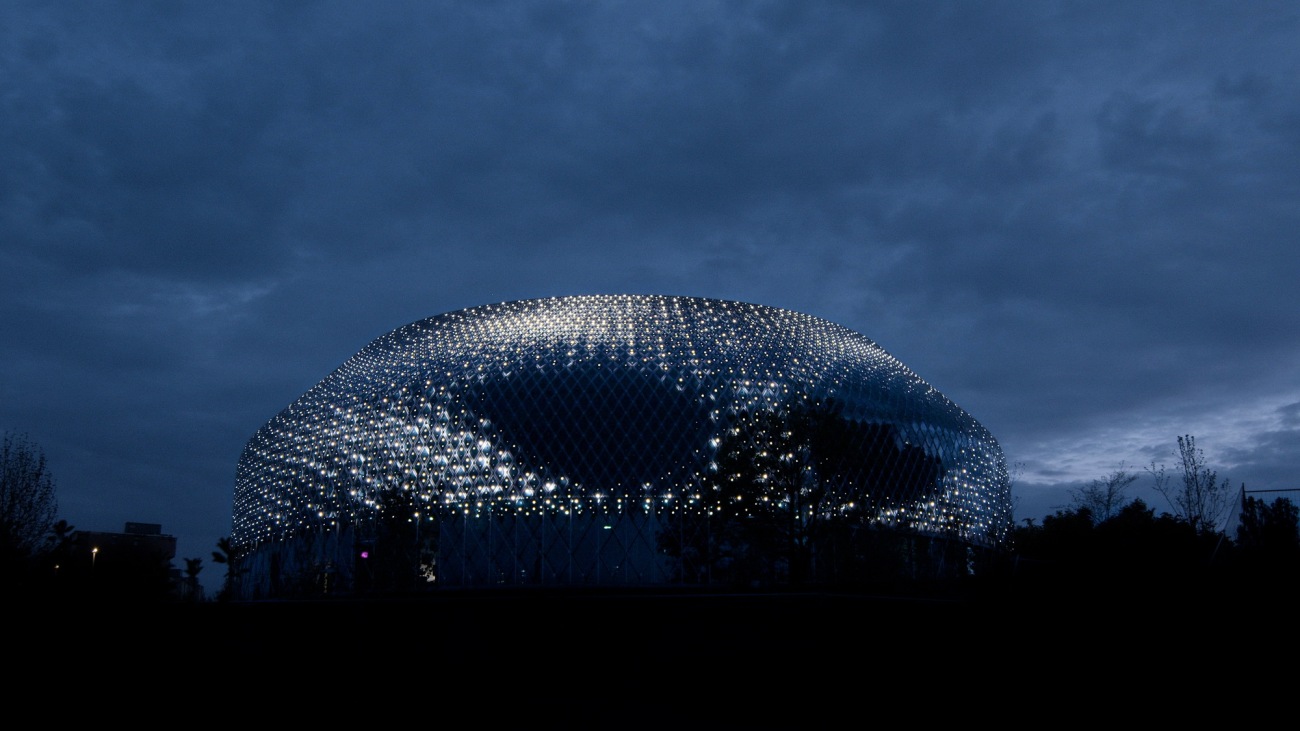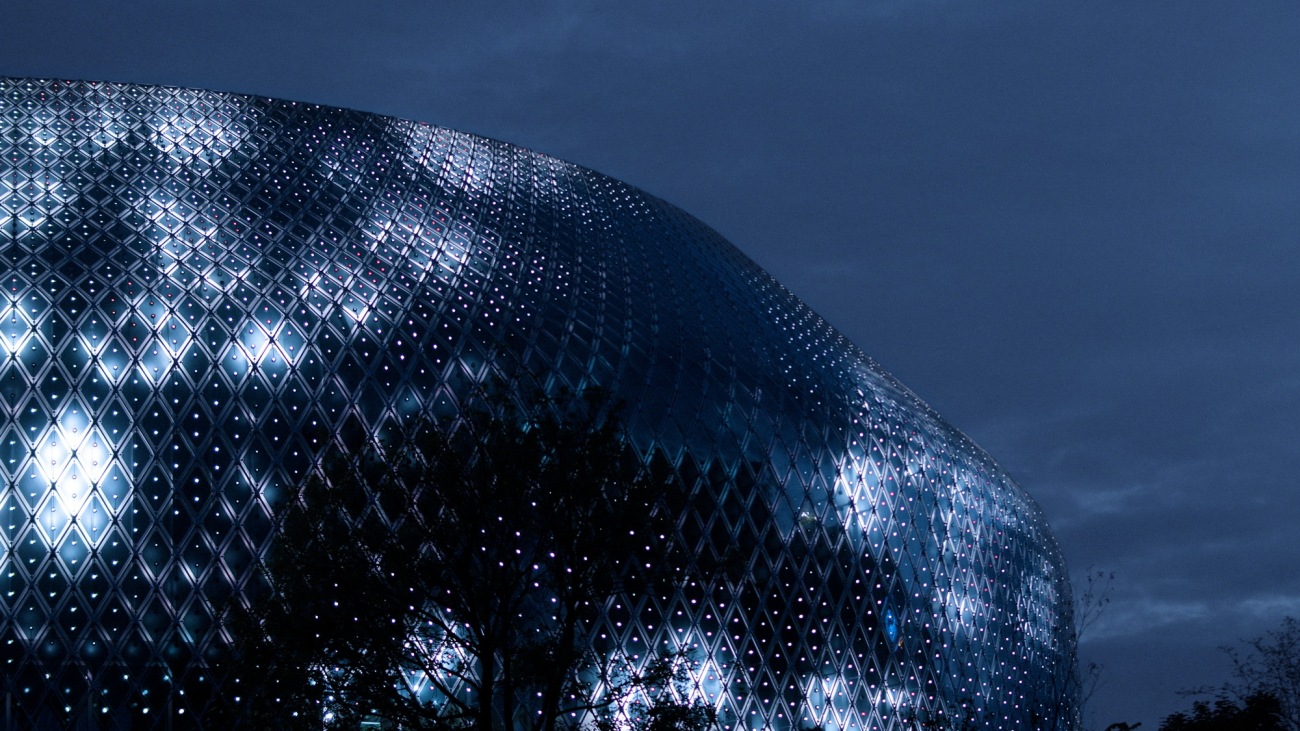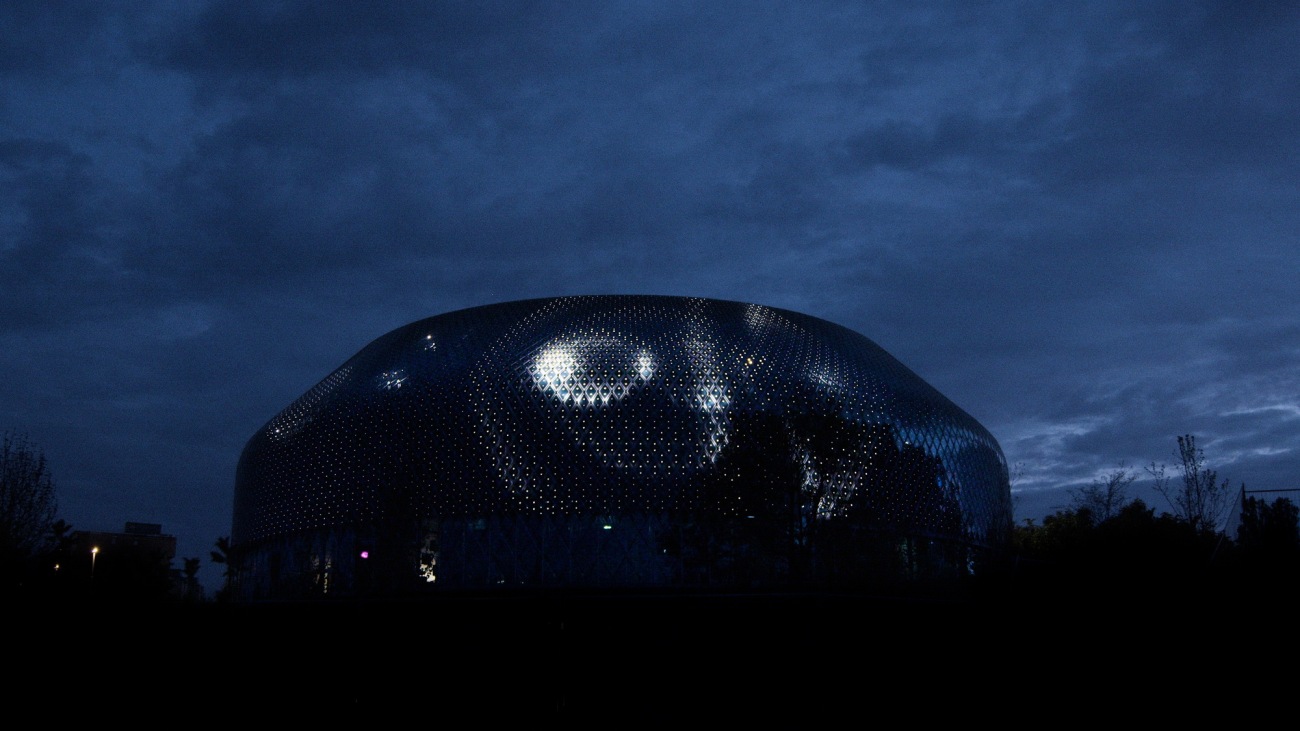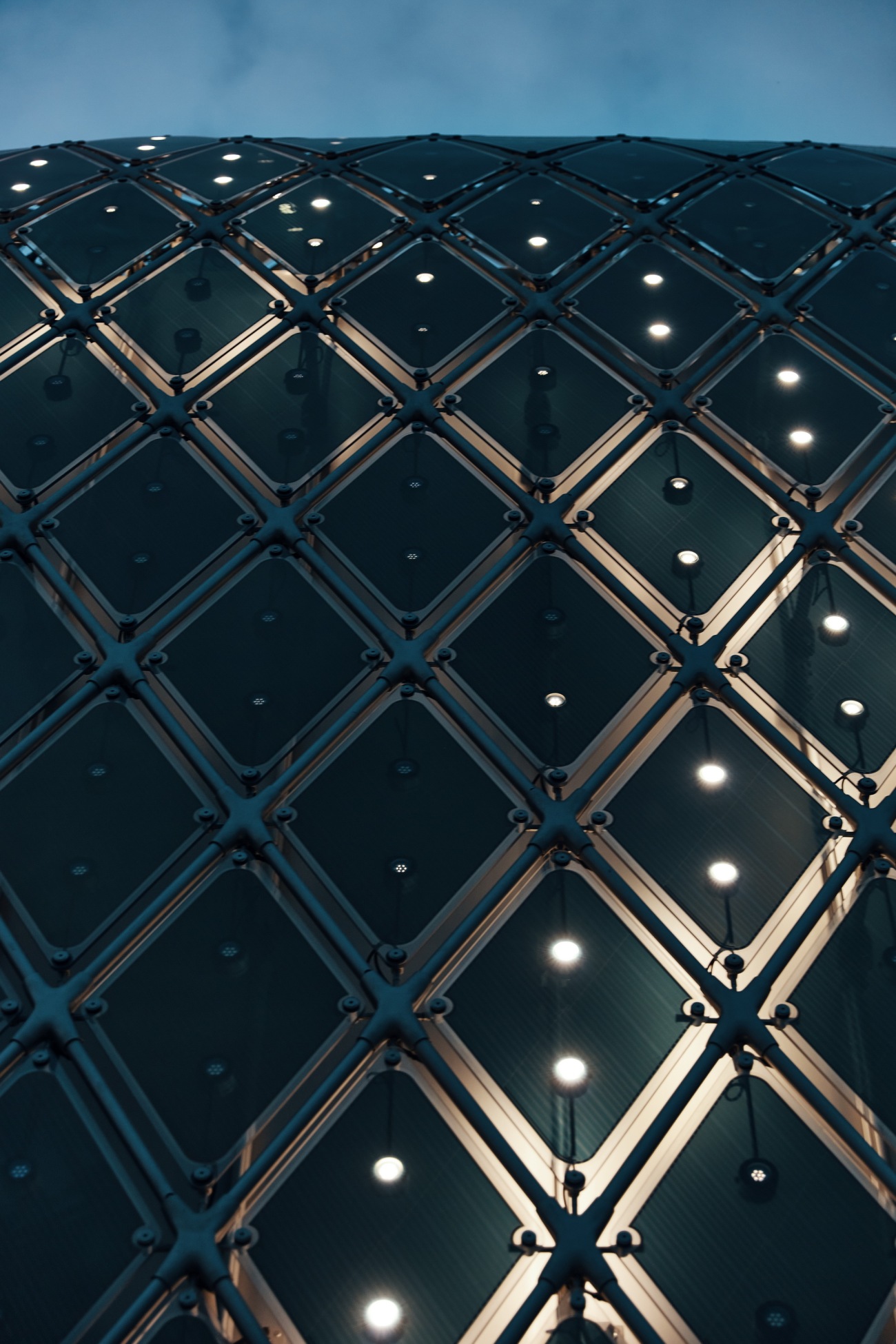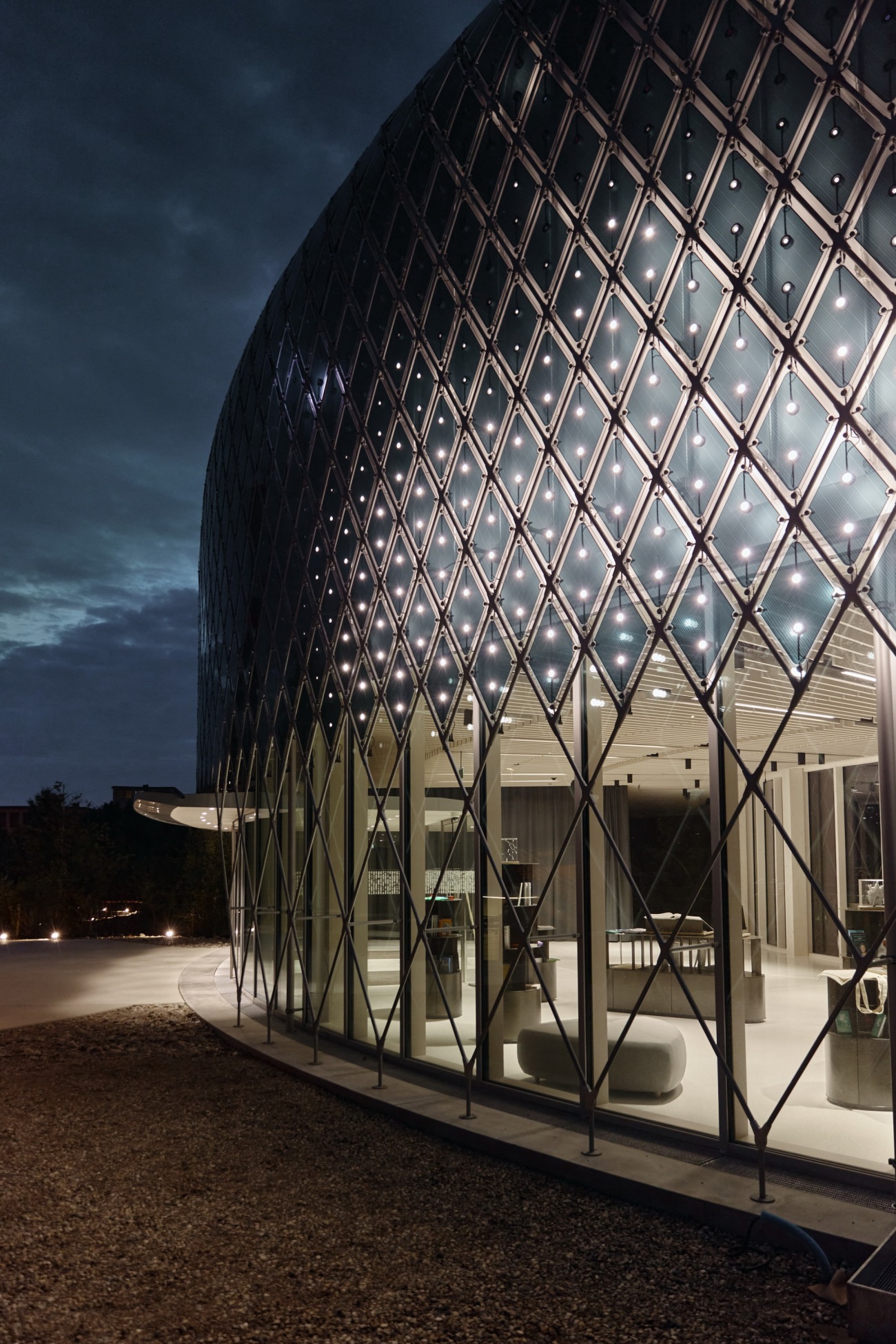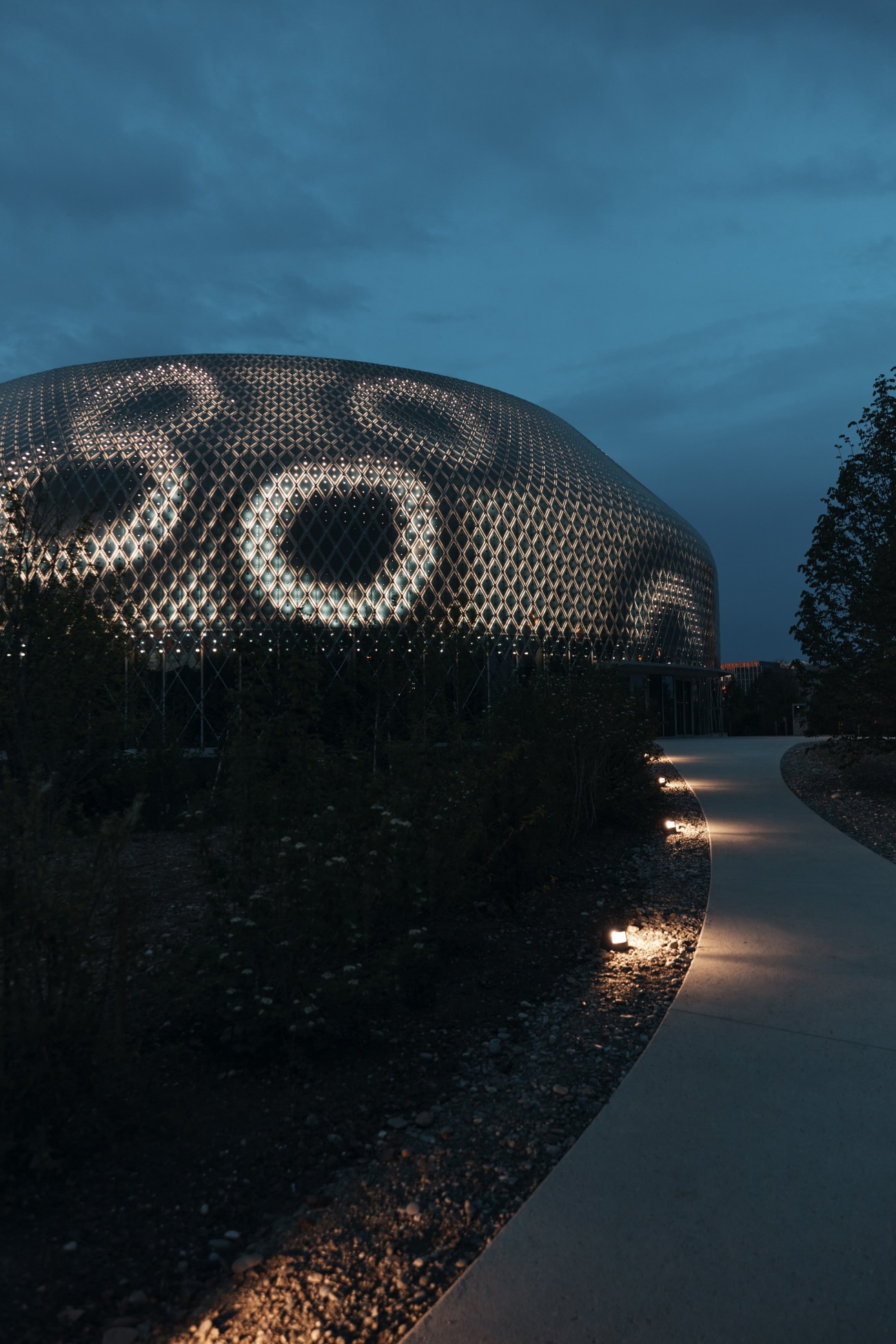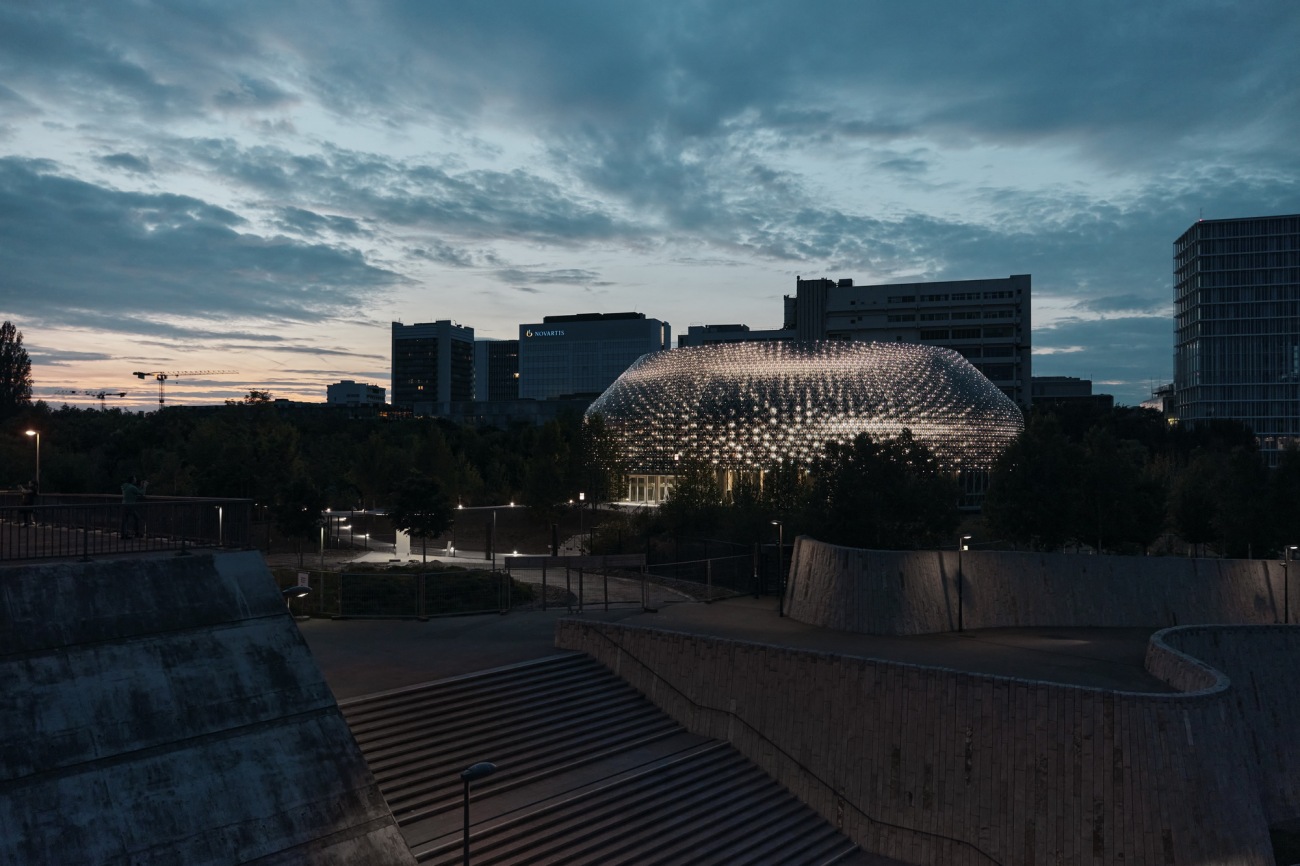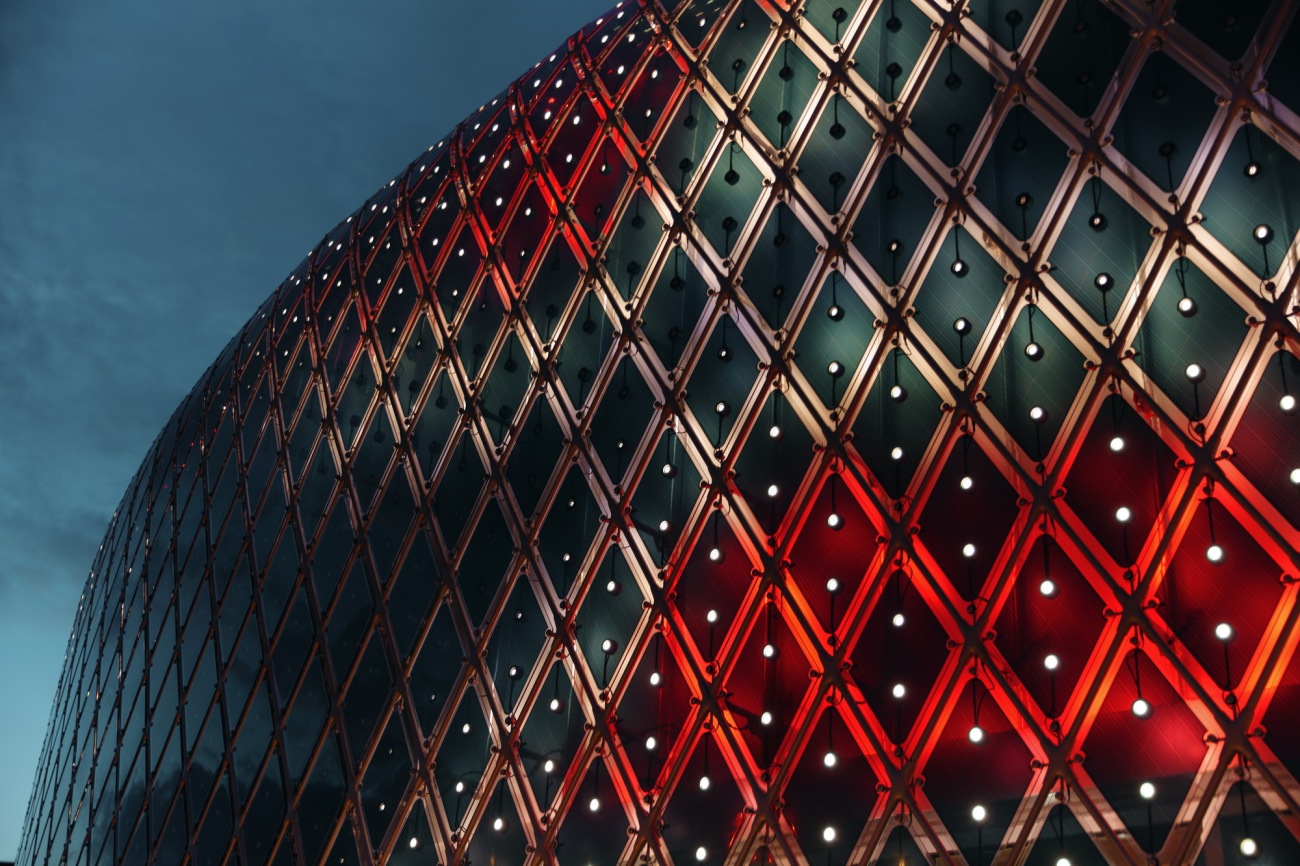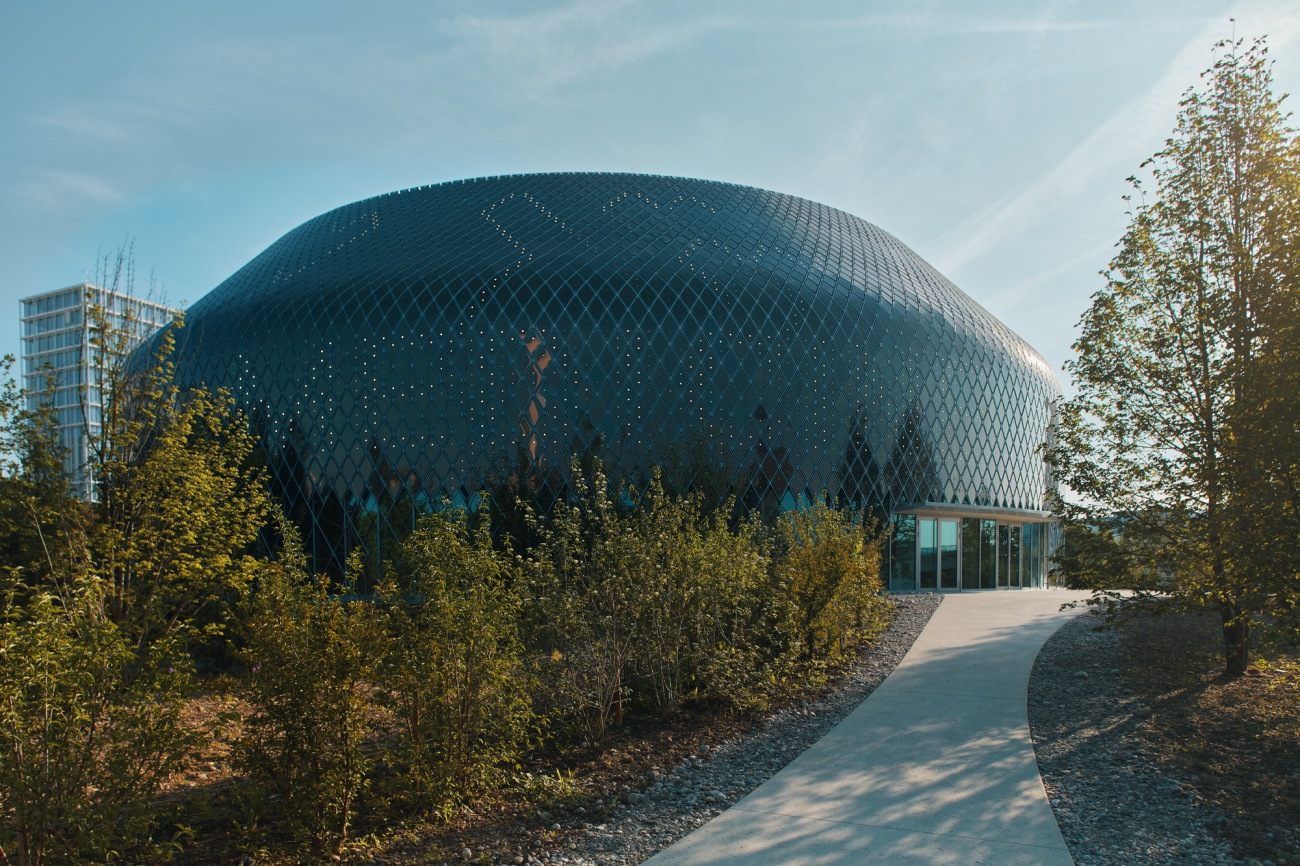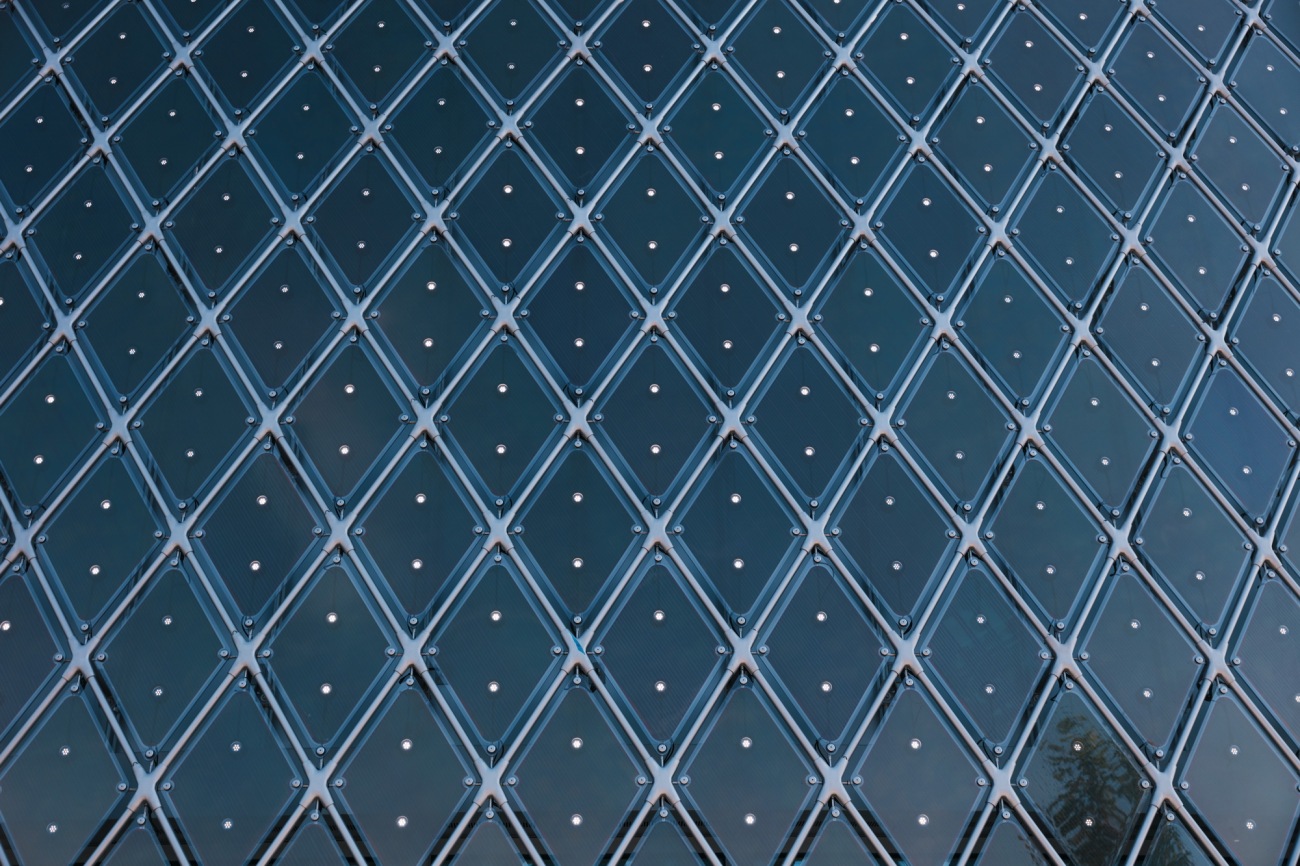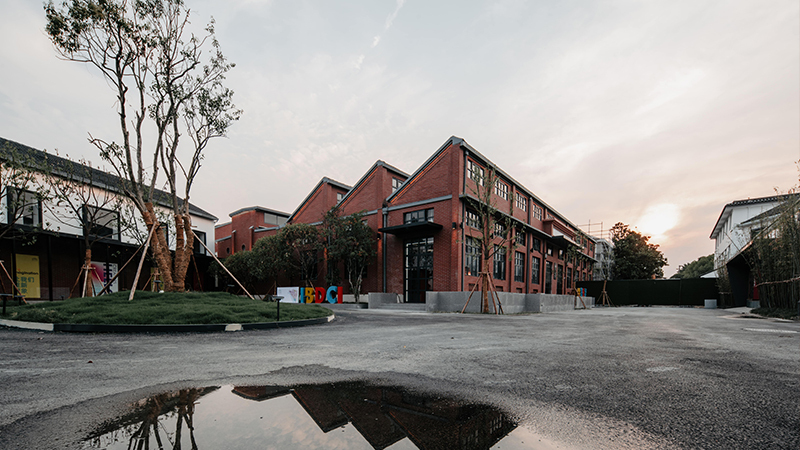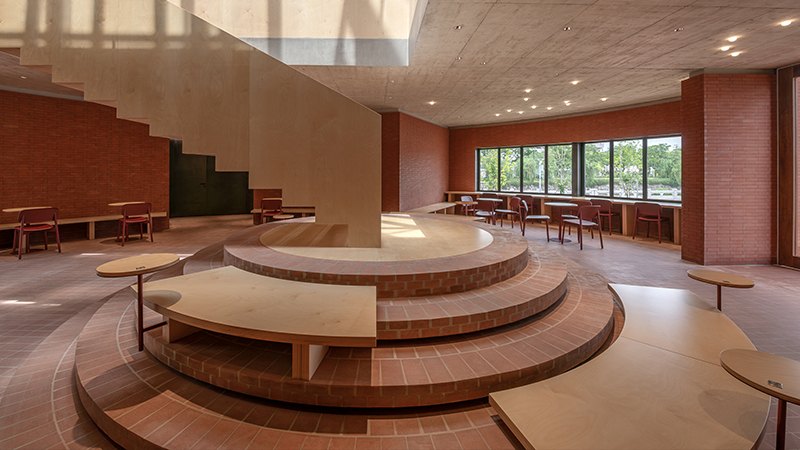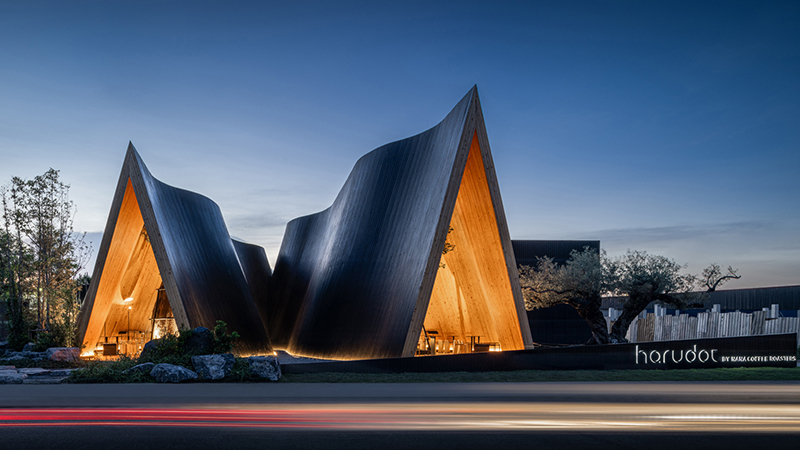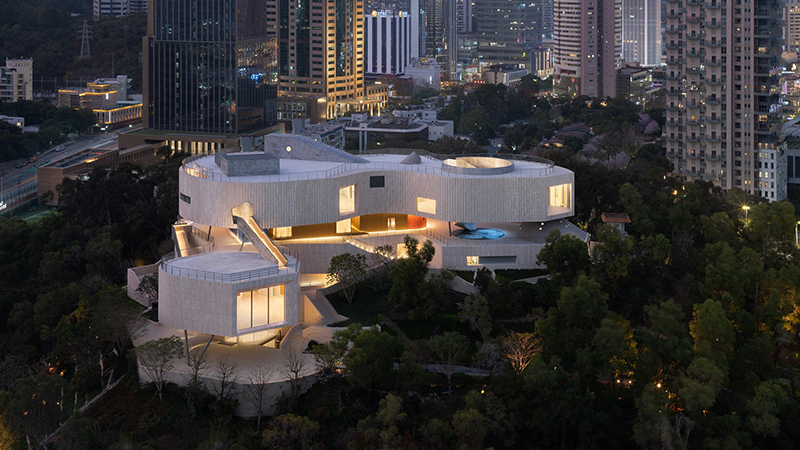| 公司: | iart – studio for media architectures | 类型: | 建筑 |
|---|---|---|---|
| 地区: | 瑞士 | 标签: | 商业空间 |
iart自豪地介绍了与AMDL CIRCLE和Michele De Lucchi合作创建的诺华零能源媒体馆。它将有机光伏和LED相结合,横跨瑞士巴塞尔诺华校区最近开业的诺华展馆,展示了有机光伏在建筑中的潜力。
iart proudly introduces the Novartis Pavillon Zero-Energy Media Façade, created in collaboration with AMDL CIRCLE and Michele De Lucchi. Combining organic photovoltaics and LEDs, it spans the recently opened Novartis Pavillon on the Novartis Campus in Basel, Switzerland, illustrating the potential of organic photovoltaics in architecture.
零能源媒体立面共有10000个菱形太阳能模块,内置LED灯,不仅向外发光,而且朝着下面金属外壳的方向发光。光线从外壳上反射,并通过半透明的太阳能模块向外闪烁,形成了一层视觉上多层的膜,能够显示内容。
The zero-energy media façade features a total of 10,000 diamond-shaped solar modules, with LED lights embedded within that not only shine outwards, but also in the direction of the metal
shell beneath. The light reflects off the shell, and shimmers outwards through the semi-transparent solar modules, resulting in a visually multi-layered membrane with the ability to display content.
该膜只消耗其所能产生的电能,就成为了一个零能量的介质立面。这是由诺华Pavillon定制的碳基有机太阳能模块实现的。
Consuming only as much electrical energy as it is capable of producing, the membrane becomes a zero-energy media façade. This is made possible by the carbon-based organic solar modules that were custom-made for the Novartis Pavillon.
它们的设计和物理特性使这些有机太阳能组件非常适合在圆顶形状的诺华展馆上使用。它们可以制作成各种形状,可弯曲、半透明且极其感光,使它们能够安装在不理想的朝向太阳的地方。它们还比硅太阳能组件含有更少的灰色能量,从可持续发展的角度来看,这使它们变得有趣。Their design and physical properties make these organic solar modules ideal for use on the dome-shaped Novartis Pavillon. They can be produced in various shapes and are bendable, translucent, and extremely light-sensitive, enabling them to be installed in spots not ideally oriented towards the sun. They also contain less grey energy than silicon solar modules, making them interesting from a sustainability perspective.
太阳能模块在圆顶状的诺华Pavillon上的布置能够测量各个方向产生的电力。在运营的头几个月收集的数据显示,立面产生的电力足以在白天(展览开放时)显示文本,并在日落后显示长达两个小时的数字艺术动画。一旦有足够的数据,几个月后将有可能进行广泛的分析。
The arrangement of the solar modules on the dome-shaped Novartis Pavillon enables measurement of the electricity produced in all directions. Data collected during the first few months of operation shows that the façade produces enough power to display text in the daytime - when the exhibition is open - and digital art animations for up to two hours after sunset. An extensive analysis will be possible in a few months, once sufficient data is available.
Solar modules produced by ASCA
Organic solar modules 10’680
LED units 15’120 (bi-directional, 30’240 LEDs in total)
Tubes in subconstruction 22’536
Nodes in subconstruction 11’608
Facade surface area 2’471 m2
Photovoltaic surface area 1’333 m2
Maximum capacity 36 kWp
Power production per year (estimate) 20 MWh
更新日期:2023-07-07 17:22:09
非常感谢 iart – studio for media architectures 带来的精彩项目, 查阅更多Appreciations towards iart – studio for media architectures for sharing wonderful work on hhlloo. Click to see more works!
